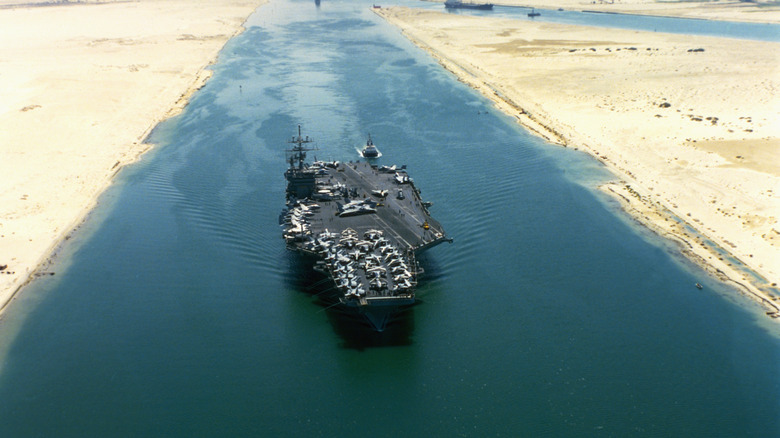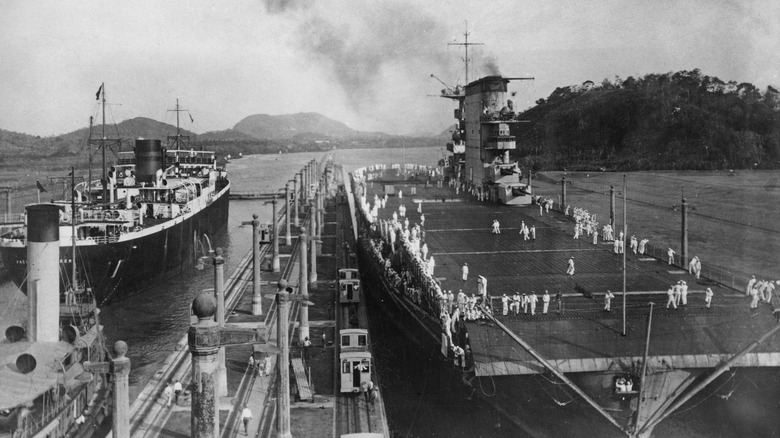Can U.S. Aircraft Carriers Fit Through The Suez And Panama Canals?
We tend to associate aircraft carriers with being enormous floating military cities, and not necessarily the most lithe, maneuverable ships in the ocean. They can circumnavigate the globe without needing to refuel, but when doing so, are they able to pass through the Panama and Suez Canals? Or do they have to take long way around?
It's certainly hard to imagine an aircraft carrier passing through any narrow corridor with multiple sharp turns, let alone one that also serves as a heavily-trafficked passageway for international trade. Opened in 1914, the Panama Canal connects the Pacific and Atlantic oceans, enabling ships to pass between them without taking the scenic route around South America. It's about 82 km (50 mi) long. The Suez Canal was opened in 1869. and connects the Mediterranean Sea to the Red Sea, — enabling a fluid trade route between Europe and Asia, running at about 193.30 km (120 mi) long.
All other dimensions aside, it's the width of the canals at their narrowest point that giant ships like aircraft carriers have to worry about. Up until recently, modern aircraft carriers like the Nimitz-class and Ford-Class carriers could pass through the Suez canal, but were unable to transit the narrower Panama Canal.
Growing aircraft carriers and traversing the canals
In the past, it was possible for smaller American aircraft carriers to fit through the Panama Canal, and the first to do so was the USS Saratoga in 1943. For ages, the maximum sized ship that could fit through required a beam of around 106 feet, which is the width of the ship at its widest point. The Nimitz class carriers generally have a beam of 134 feet, and the upcoming Ford class carriers with similar dimensions would not fit through either.
But with the expansion of the canal in 2016, that allowable beam is now 180 feet, so it appears possible. Appears is the key word here, because no carrier seems to have traveled through the Panama Canal since the expansion.
The Suez Canal has a minimum width of 205 meters (673 feet), and so modern U.S. aircraft carriers can fit through, as the USS Dwight D. Eisenhower recently did in 2021.
Other, smaller U.S. warships regularly pass through both canals, but it's a difficult feat with any comparable-sized ship, as there are somewhat regular traffic jams, ships occasionally get stuck in the Suez Canal, and captains must know the difficult routes with tight corners and sharp turns. It is possible to see a U.S. aircraft carrier pass through the Suez Canal, but you might be waiting there awhile.

